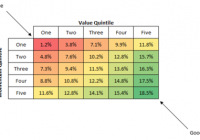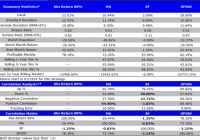What Small-Cap Blend Funds Can Strengthen Your Portfolio?
Small-cap blend funds are a type of equity mutual funds which holds in its portfolio a mix of value and growth stocks, where the market capitalization of the stocks are generally lower than $2 billion. Blend funds are also known as “hybrid funds”. Blend funds aim for value appreciation by capital gains. It owes its origin to a graphical representation of a fund’s equity style box. In addition to diversification, blend funds are great picks for investors looking for a mix of growth and value investment. Meanwhile, small-cap funds are a good choice for investors seeking diversification across different sectors and companies. Investors with a high risk appetite should invest in these funds. Below we will share with you 5 buy-ranked small-cap blend mutual funds. Each has earned either a Zacks Mutual Fund Rank #1 (Strong Buy) or a Zacks Mutual Fund Rank #2 (Buy) as we expect these mutual funds to outperform their peers in the future. SSgA Enhanced Small Cap N (MUTF: SESPX ) seeks maximum return. SESPX invests a lion’s share of its assets in equity securities of small-cap companies having market capitalizations similar to those included in the Russell 2000 Index. SESPX primarily focuses on acquiring common stocks of companies and may also invest in IPOs, fixed-income securities and money market funds. The SSgA Enhanced Small Cap N fund has returned 8.6% over the past one year. SESPX has an expense ratio of 0.75% compared to a category average of 1.24%. Fidelity Stock Selector Small Cap (MUTF: FDSCX ) invests a large chunk of its assets in common stocks of companies having market capitalizations within the universe of the Russell 2000 Index or the S&P SmallCap 600 Index. FDSCX seeks capital growth by investing its assets across a wide range of sectors. The Fidelity Stock Selector Small Cap fund has returned 10.1% over the past one year. As of April 2015, FDSCX held 197 issues, with 1.35% of its total assets invested in Bank of the Ozarks Inc. Thrivent Small Cap Stock A (MUTF: AASMX ) seeks capital appreciation over the long term. AASMX invests a majority of its assets in securities of companies having market capitalizations similar to those listed in the S&P Small Cap 600 Index or the Russell 2000 Index. AASMX primarily focuses on acquiring common stocks of domestic companies. The Thrivent Small Cap Stock A fund has returned 9.4% over the past one year. Matthew Finn is one of the fund managers and has managed AASMX since 2013. Vanguard Strategic Small-Cap Equity Investor (MUTF: VSTCX ) invests a major portion of its assets equity securities of small-cap firms that are located in the US. VSTCX invests in securities of companies that are expected to have an impressive growth potential and favorable valuation as compared to its industry peers. VSTCX evaluates the holdings of the MSCI US Small Cap 1750 Index in order to maintain a similar risk profile. The Vanguard Strategic Small-Cap Equity Investor fund has returned 10.1% over the past one year. VSTCX has an expense ratio of 0.38% compared to a category average of 1.24%. Fidelity Series Small Cap Opportunities (MUTF: FSOPX ) seeks capital growth over the long run. FSOPX invests a large share of its assets in securities of companies having market capitalizations within the range of the Russell 2000 Index or the S&P SmallCap 600 Index. FSOPX uses a “blend” strategy to invest in companies throughout the globe across a large number of sectors. The Fidelity Series Small Cap Opportunities fund has returned 8.8% over the past one year. As of April 2015, FSOPX held 196 issues, with 1.39% of its total assets invested in Bank of the Ozarks Inc. Original Post

